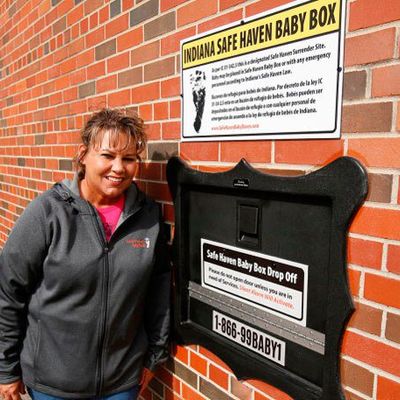
The first of a planned 100 safe-haven baby boxes have been installed in a fire house in Indiana.
The boxes, which are climate-controlled and padded, are meant to encourage new mothers who don’t want their children to safely drop them off, rather than discard them in the trash or elsewhere, as hundreds of babies are each year. In fact, no one knows or is actually keeping track of the numbers, but the boxes, advocates say, save babies’ lives. The boxes in Indiana are the first in the United States.
Monica Kelsey, the woman who led the charge in Indiana, a volunteer firefighter who was herself orphaned as an infant, is also an anti-abortion activist. She told the AP, “[Safely abandoning a child] is not criminal,” adding, “We don’t want to push women away.”
She’s right: Dropping an infant off at a firehouse or a police station is almost always legal in the U.S., where each of the 50 states has slightly different so-called “safe haven” laws that allow for the abandonment of newborns. Much of this legislation was born out of a string of baby abandonments and deaths in the late 1990s in Texas, leading then-governor George W. Bush to pass the first such law, known as Baby Moses laws.
Several other countries, including parts of Eastern Europe and Germany, have similar laws, but the U.N. has questioned whether or not they work. In 2012, when the boxes were on the rise, it issued a statement saying that they contravened “the right of the child to be known and cared for by his or her parents.”




